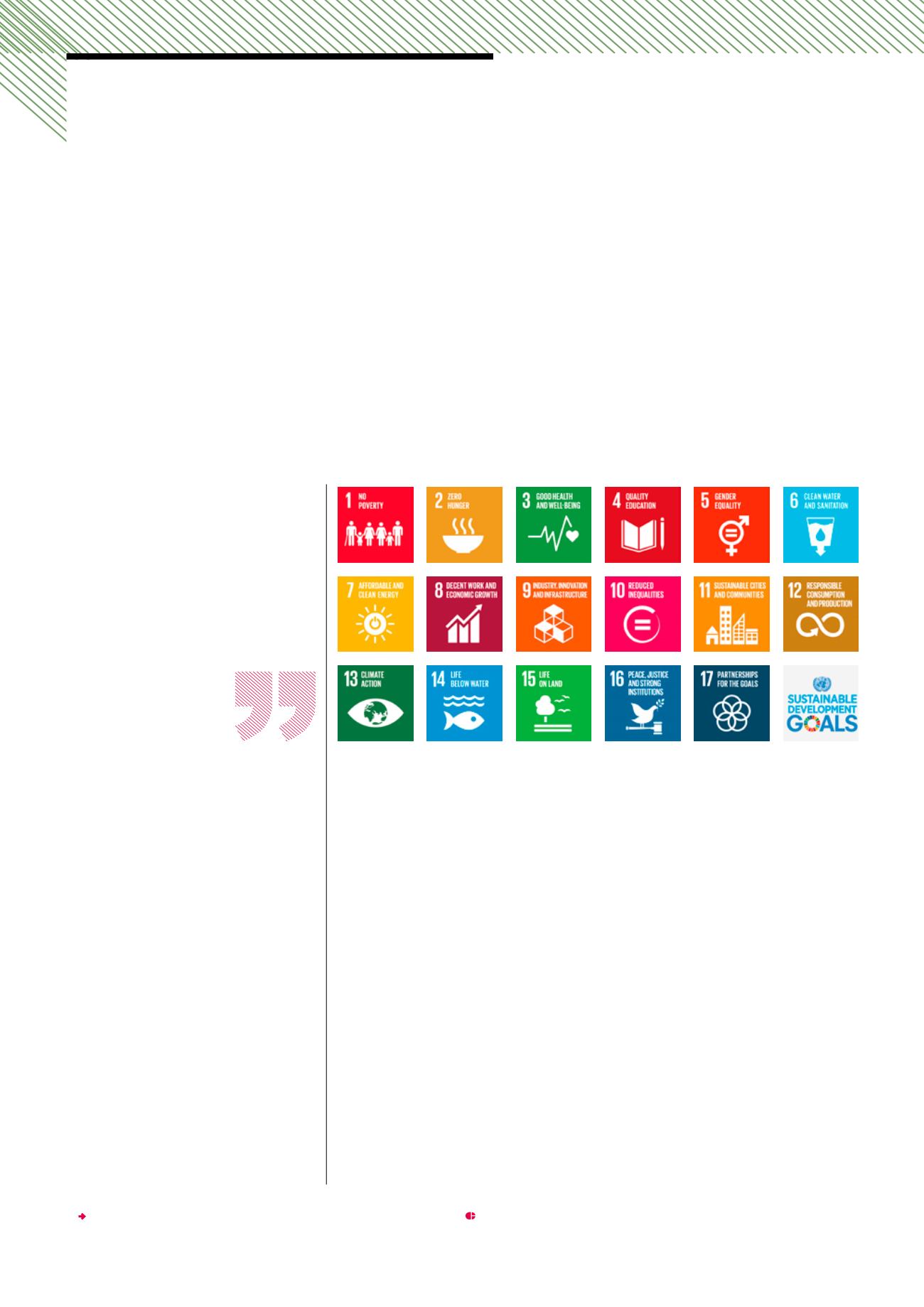

36
\\ COFINIMMO \\
OUR ACTION FIELDS CORRESPONDING WITH THE SUSTAINABLE DEVELOPMENT GOALS
OUR ACTION FIELDS
CORRESPONDING WITH
THE SUSTAINABLE
DEVELOPMENT GOALS
WE SEE OUR ACTIVITIES
1
IN A BROADER FRAMEWORK AND HAVE
TIED THE OBJECTIVES OF OUR SUSTAINABLE DEVELOPMENT POLICY
TO THOSE OF THE UNITED NATIONS. THEY CONSIST OF A LIST OF
MEASURES TO BE IMPLEMENTED FOR THE PRESERVATION OF
THE PLANET AND WELL-BEING OF ITS INHABITANTS. IN PRACTICE,
THE UNITED NATIONS' GOAL IS TO END POVERTY BY 2030 AND TO
ENHANCE LIVES WHILE PRESERVING THE PLANET VIA 17 SUSTAINABLE
DEVELOPMENT GOALS (
SDG
).
1
The details of all the 2017 actions and future objectives are included in a dashboard
( see Appendix Dashbord of the 2017 Sustainable Development Report – full version on
www.cofinimmo.com)
.
“THE SUSTAINABLE
DEVELOPMENT GOALS
ARE A NAVIGATION
SYSTEM FOR REACHING
THE FUTUREWE
DESIRE. THEY SERVE AS
A COMPASS INDICATING
OUR DIRECTION, AND
OFFER A MAP FOR
MEASURING PROGRESS
ALONG THE ROUTE.”
ERNST LIGTERINGEN,
CEO GLOBAL REPORTING
INITIATIVE (GRI) TILL MID-2017
OURMATERIALITYMATRIX
Our materiality matrix was established for
the first time in 2014, based on the GRI
guidelines. It is reviewed and fine-tuned
every year. Each point on the matrix
represents a sustainable development
challenge for our company. Its position
on an axis is jointly determined by the
perception of our shareholders and the
importance of the impacts considered
by Cofinimmo in-house.
The upper right area, beyond the green
arc, contains the nine priority action fields
among the 21 identified in-house.
Certain topics in the materiality matrix are
not considered as priority issues and are
below the green arc. This does not mean
that the Group is not interested, but
can be explained by the fact that these
topics are mostly subject to fairly strict
legislation, forcing companies to address
them, irrespective of their perceived
importance. For example, we take care of
reducing water consumption by means
of remote metres, in the same way as
we treat energy consumption and CO
2
emissions.
















